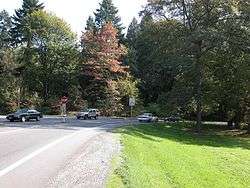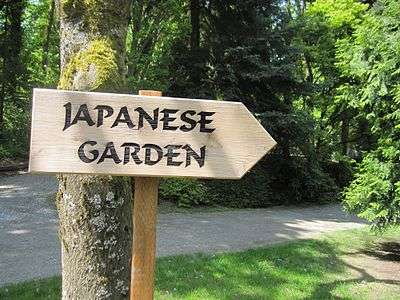Washington Park Arboretum

Washington Park is a public park in Seattle, Washington, USA, most of which is taken up by the Washington Park Arboretum, a joint project of the University of Washington, the Seattle Department of Parks and Recreation, and the nonprofit Arboretum Foundation. Washington Park also includes a playfield and the Seattle Japanese Garden in its southwest corner. The entire length of Arboretum Creek is within the park.
To the north is Union Bay; to the west are Montlake and Madison Valley; to the south is the Washington Park neighborhood; and to the east is the Broadmoor Golf Club.
Lake Washington Boulevard E. runs north and south through the park, parallel to the creek. A secondary road, for most of its length named Arboretum Drive E. and for a short northern stretch named E. Foster Island Road, runs along the Arboretum's eastern edge. E. Interlaken Boulevard and Boyer Avenue E. run northwest out of the park to Montlake and beyond. State Route 520 cuts through Foster Island and the Union Bay wetlands at the park's northern end, interchanging with Lake Washington Boulevard just outside the arboretum entrance. A foot path winds underneath the freeway overpasses and over boardwalks, along the Lake Washington ship canal, past the Museum of History and Industry, and into the gardens of the Arboretum.[1]
The Arboretum is well known for Azalea Way in the springtime, a stretch of the park which offers a unique tapestry of azaleas of many colors. The area is a popular site for strolling and is utilized by photographers and artists. The manicured Azalea Way stands out in stark contrast with the Arboretum's wild and heavily canopied areas.
The land upon Washington Park Arboretum has been developed is owned by the city, but the Arboretum is operated primarily by the University of Washington.
History
Washington Park was developed on land that had been logged by the Puget Mill Company for sixty years. In 1920, the parcel was split in two. The eastern 200 acres (0.8 km²) were developed as the Broadmoor Golf Club by a group of businessmen that included E. G. Ames, general manager of Puget Mill. The western 230 were given to the city, who developed a park and arboretum on the site. On the basis of the agreement approved by the University of Washington (Board of Regents) and the City of Seattle (City Council/Mayor), The Washington Park Arboretum was established in 1934.[2]
Highway construction impact
The potential impact of plans to reconstruct and expand State Route 520 and replace the Evergreen Point Floating Bridge in the early 2010s have raised concerns among Arboretum staff and park users.[3] As the members of the Arboretum community noted in their collective letter to the Washington State Department of Transportation, "Native plants, wetlands, and wildlife ... would be affected not only by the taking of land but by the looming shadows created by roadways in various proposals".[4] Among the alternative proposals is the "Arboretum Bypass Plan," building the new elevated highway over Union Bay on a more northerly route than the current one.[5]
Seattle Japanese Garden
The Seattle Japanese Garden is a 3.5 acre (14,000 m²) Japanese garden in the Madison Park neighborhood of Seattle, Washington. The Garden is located in the Southern end of the Washington Park Arboretum on Lake Washington Boulevard East. The Garden is one of the oldest Japanese Gardens in North America, and is regarded as one of the most authentic Japanese Gardens in the United States.[6]
See also
References
- ↑ "Washington Park Arboretum - UW Botanic Gardens". washington.edu. Retrieved 9 May 2015.
- ↑ Sustainability, UW (27 November 2015). "Washington Park Arboretum is planted in the past, looking to the future". Retrieved 18 July 2016.
- ↑ Harrell, Debera Carlton (October 31, 2006). "Tranquil Arboretum caught in 520 storm: Public balks at 6-lane road so close to park". Seattle Post-Intelligencer.
- ↑ Position Statement from the Arboretum and Botanical Gardens Committee to WSDOT Environmental Manager, September 15, 2006. Accessed online August 30, 2007.
- ↑ Washington Park Arboretum: 520 Bridge ReBuilding Plan Updates
- ↑ "North America's Top 25 Japanese Gardens". Sukiya Living. 2004. Retrieved 2015-04-29.
External links
| Wikimedia Commons has media related to Washington Park Arboretum. |
- Washington Park Arboretum: Center for Urban Horticulture, College of Forest Resources, University of Washington
- Japanese Garden
- Parks department: Washington Park Playfield
- Some photos in and around the arboretum
- History of Washington Park (and Arboretum), including several hand-drawn maps, on the site of the Seattle Department of Parks and Recreation.
Coordinates: 47°38′13″N 122°17′46″W / 47.637°N 122.296°W


